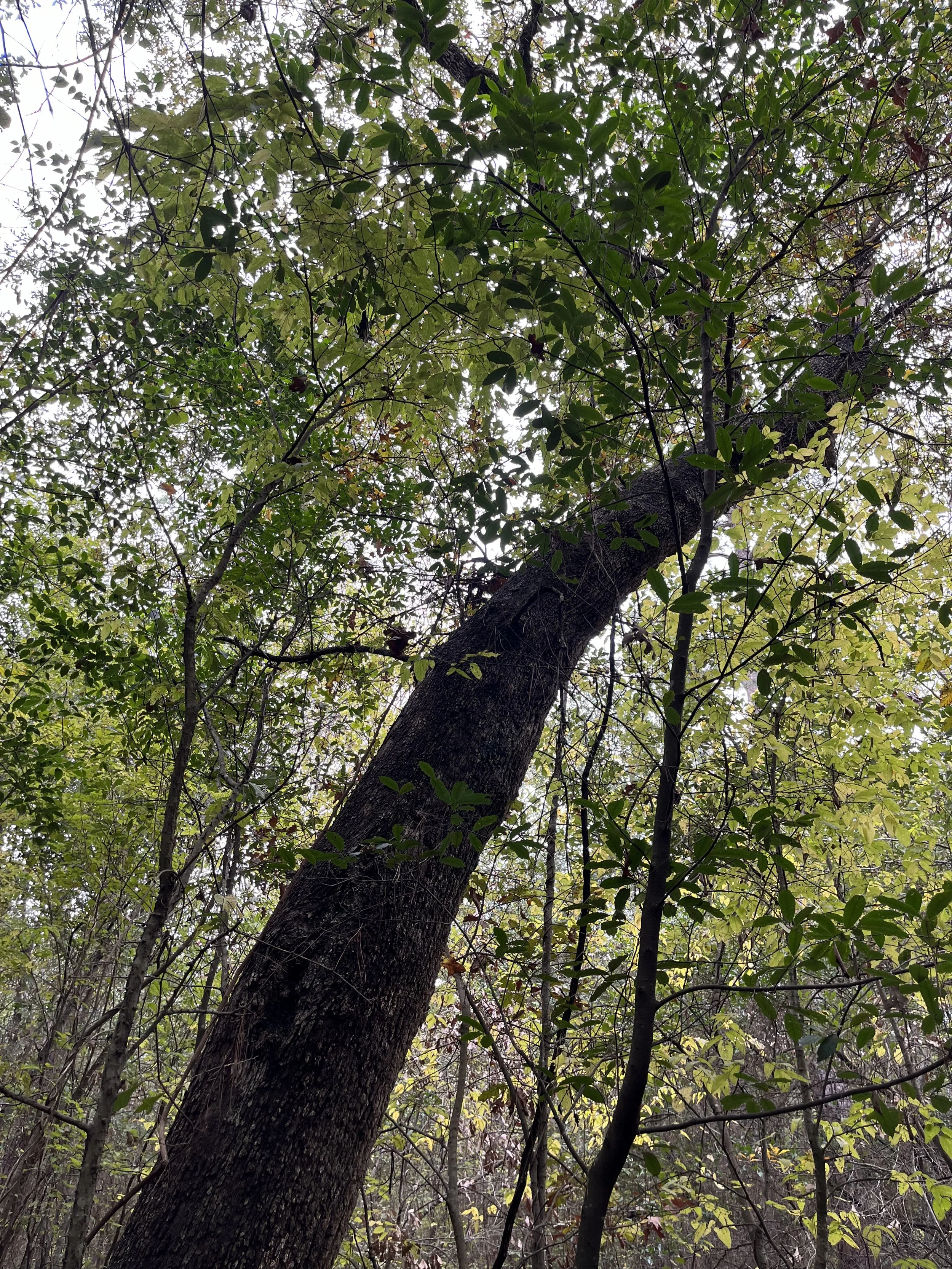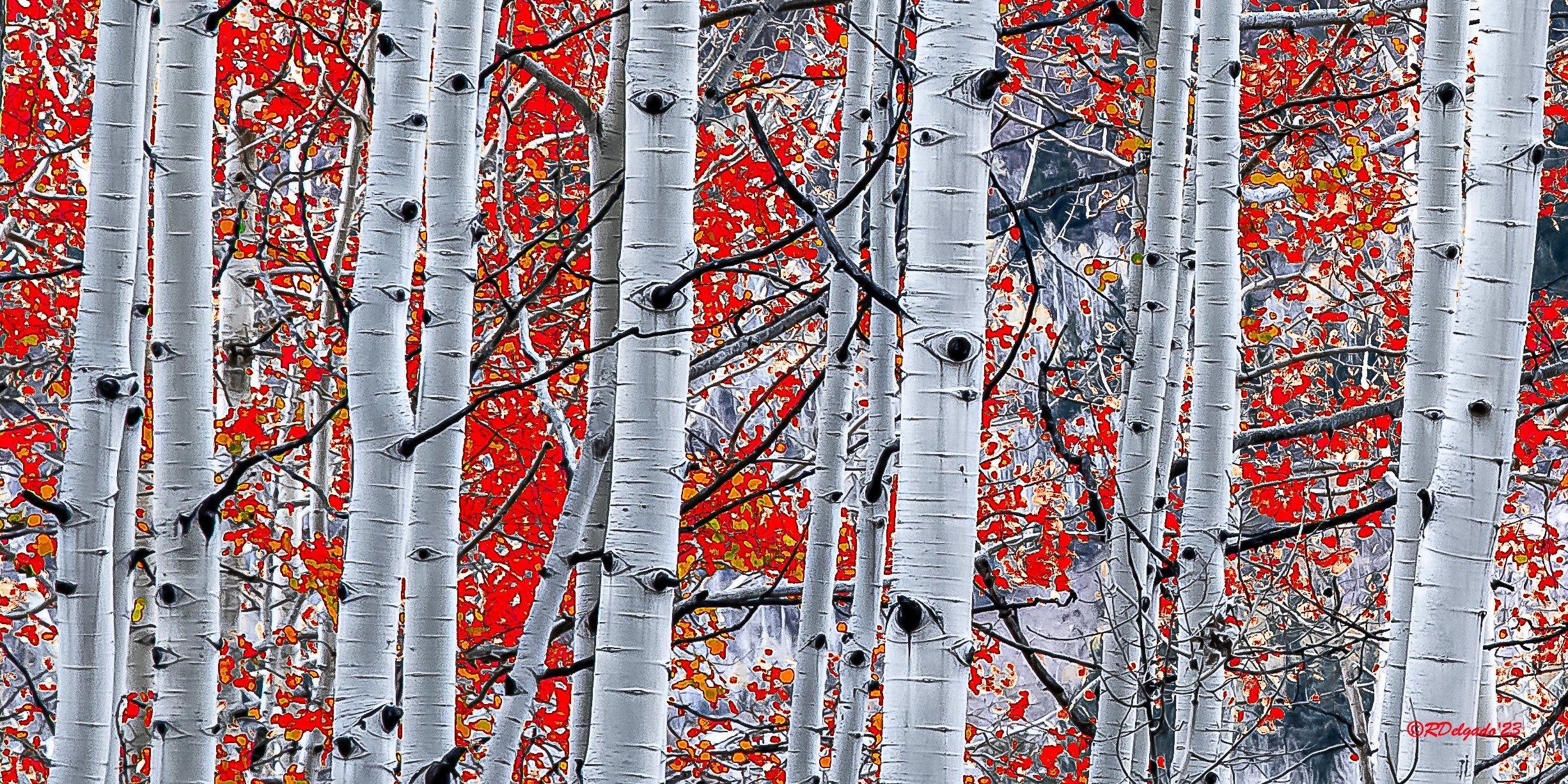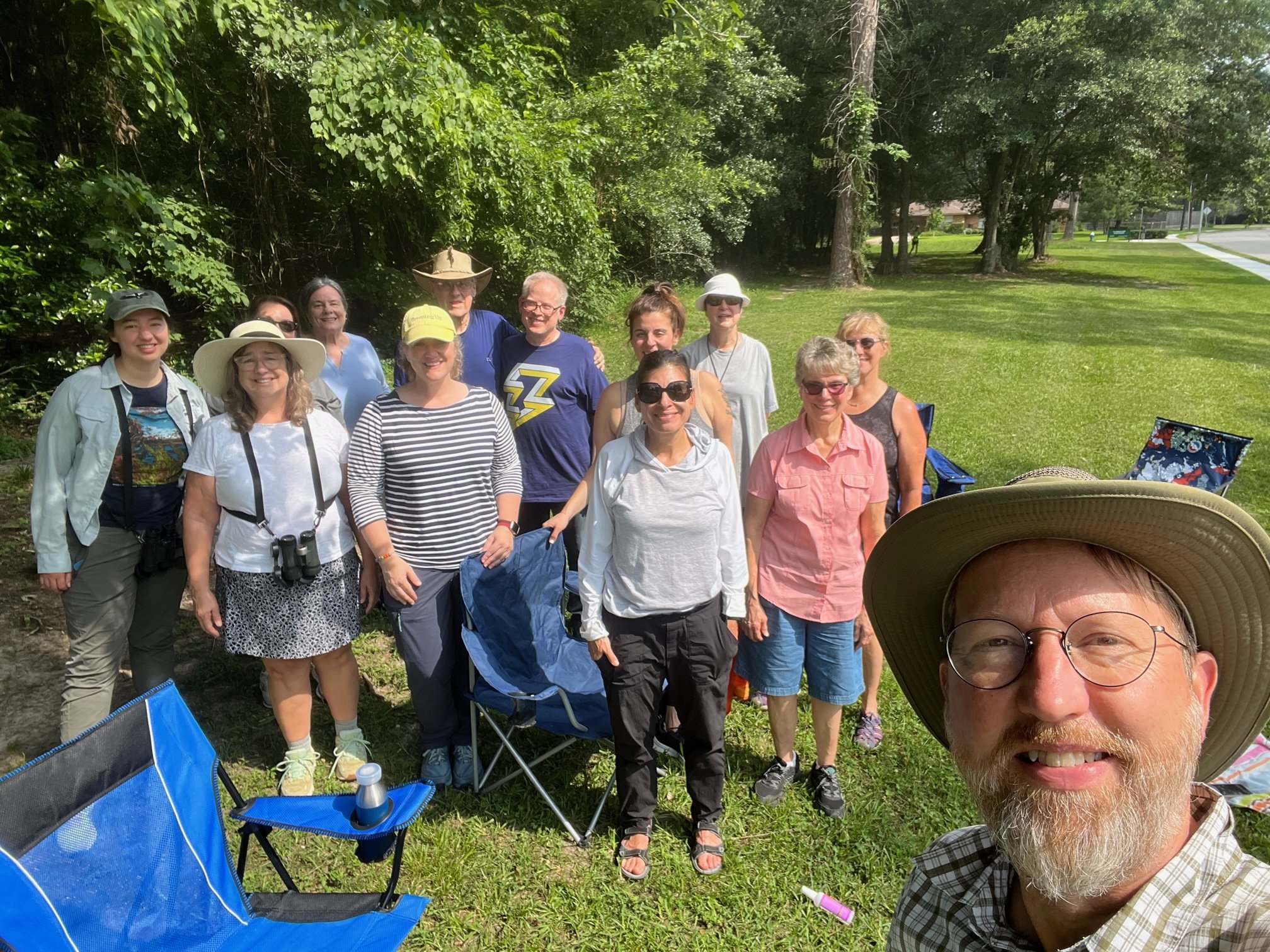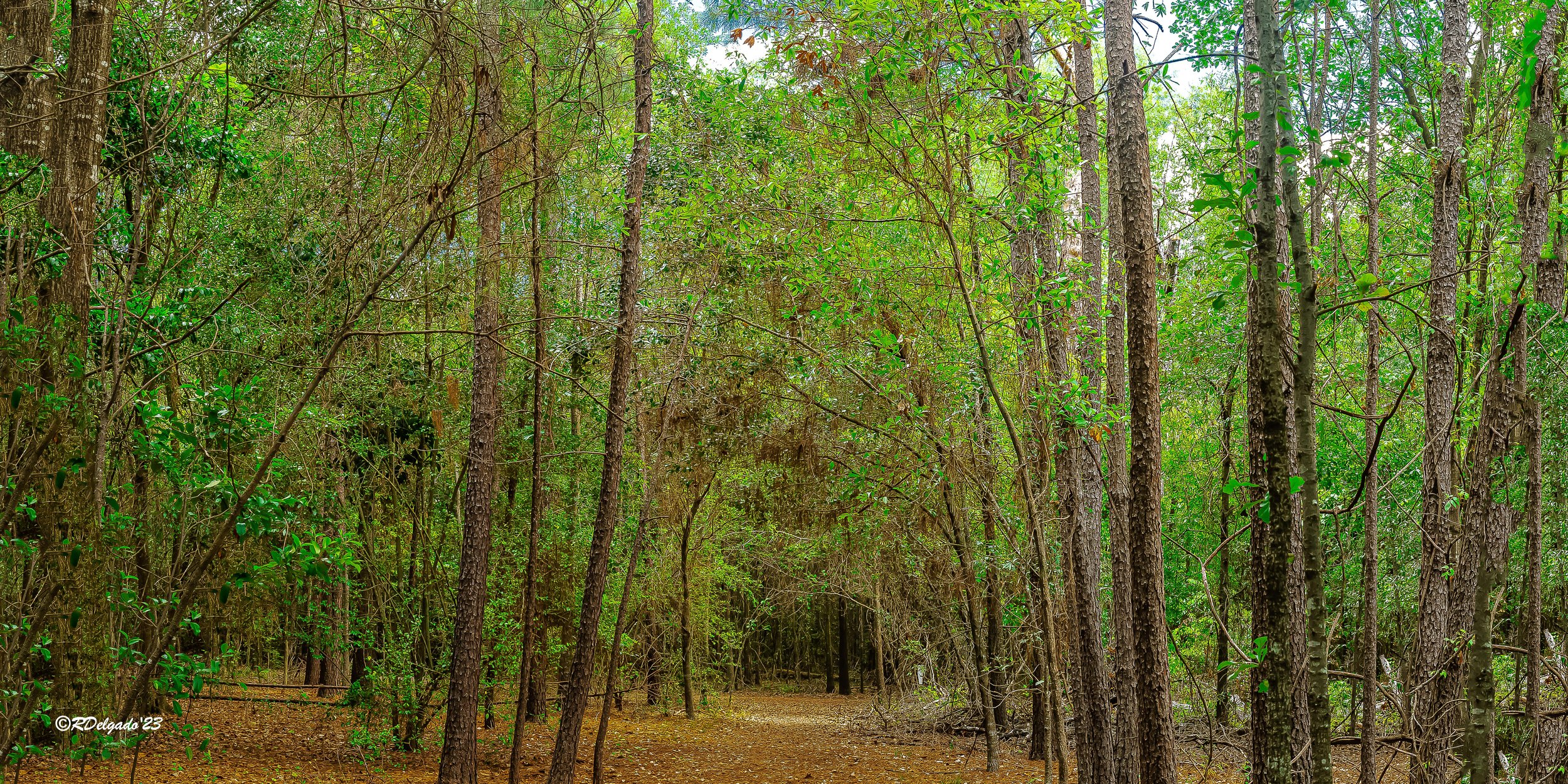It is now October and we have entered fall. Even in Houston, we experience nature’s rhythms. Those of us who have lived or traveled further north know that these rhythms are more exaggerated in other places, but still, they are here. During fall as the days get shorter, the weather gets cooler, some of our trees shed their leaves, and plants and animals prepare for hibernation and rest.
Spring brings new possibilities
We discussed meditation and mindfulness. One definition of mindfulness is that mindfulness is when we bring to our awareness that which does not require our awareness. For example, our bodies will breathe without our attention to breathing. So when we attune ourselves to our breathing, we are being mindful. Similarly, our senses do not require our attention. We will hear with no effort so when we attune ourselves to what we are hearing, when we focus on listening, we are being mindful.
How leaves sing and what they might be telling us
We discussed meditation and mindfulness. One definition of mindfulness is that mindfulness is when we bring to our awareness that which does not require our awareness. For example, our bodies will breathe without our attention to breathing. So when we attune ourselves to our breathing, we are being mindful. Similarly, our senses do not require our attention. We will hear with no effort so when we attune ourselves to what we are hearing, when we focus on listening, we are being mindful.
Facing New Experiences
How full is your bucket?
This was lead by Laura Mayo, the Senior Minister of Covenant Church and is active in Houston interfaith work.
We gathered and greeted each other. We began by finding a comfortable spot and doing deep breathing, holding our breath after each inhale and exhale. We added the use of mantras to our deep breathing:
Breathe in peace, Breathe out worry.
Breathe in ease, Breathe out pain.
Breathe in joy, Breathe out sorrow.
Breathe in life, Breathe out fear..
Breathe in hope, Breathe out despair
From our deep breathing we moved into a guided meditation.
For this meditation you will need a bucket. Perhaps you will use a sandcastle bucket or an old metal bucket from your childhood. Imagine yourself walking through The Lorraine Cherry Nature Preserve with your bucket. As you walk, you hear the crunch of leaves under your feet. A leaf catches your eye. It is brown around the edges with yellow in the middle. This leaf represents your worry for your family. This is the concern you feel for your family members who are sick, who are struggling, or who are at loose ends. You pick up this leaf, it is heavier than you expect, and you add it to your bucket. You continue walking and you see a large tree with a bright green leaf under it. This leaf is the concern you have for your work/your daily tasks. This is the worry for all the to-do lists and the many things that demand your time and energy. You put this leaf in your bucket and notice that your bucket is very heavy now. As you begin walking again, you move the bucket to your other hand.
You notice a large puddle and in it another leaf is floating. This one is even larger than the last leaf. It is almost all brown and the veins are very pronounced. This leaf is your worry for our city, our country and our world. This is all of your concern for elections and wars and for our planet and the people and animals and plants that share this world with us. You carefully lift this leaf from the water and add it to your bucket. You begin walking again. You need to go slower now because your bucket is so heavy. As you walk you see a stump and on the stump is a yellow leaf with little bits of orange on the edges. This is your worry for yourself. Think of all your worries: the things that wake you at night, that come into your mind while you are trying to do other things, every concern you carry. You pick up this leaf and add it to your bucket. Your bucket is so heavy now that you must switch hands again as you begin to walk.
The bucket is really too heavy to continue to carry it. You decide you need to put these leaves back in the nature preserve. You find the leaf that represents your worry for your family. You place it carefully under a vine and as you place it you say to all of your family:
May you be happy, May you be safe.
May you be healthy, May you be know ease.
May you be at peace, May you know you are loved.
You pick your bucket up again and move further into the preserve. You see a decomposing log and you put your bucket down. You find the leaf that represents your worry for your work/your daily tasks. You place this leaf underneath the decomposing log and you say:
May you be happy, May you be safe.
May you be healthy, May you be know ease.
May you be at peace, May you know you are loved.
The bucket is lighter now and easier to carry. You continue to walk. You notice a fork in the path you are on and stop in the middle. You find the leaf that represents the worry you have for our city, our country, our world. You put the leaf down and you say:
May you be happy, May you be safe.
May you be healthy, May you be know ease.
May you be at peace, May you know you are loved.
The bucket is so light now. Walking is much easier. You walk for a while just listening to the birds and noticing the sound of your feet. You see a young tree. It is small but growing. You place your last leaf by the young tree. This last leaf is the one that represents your worry for yourself. As you place it you say:
May I be happy, May I be safe.
May I be healthy, May I be know ease.
May I be at peace, May I know you are loved.
Your walking now is so much easier. Your bucket is light. You can feel the fresh air on your face and in your hair. The birds seem to be louder. You feel free and gentle.
After the meditation, we moved into The Lorraine Cherry Nature Preserve for a meditative walk for 20 minutes and then regathered. Several people shared how helpful the guided meditation was to help them release their worries.
Photo by Robert Delgado.
Coming of Spring
This was lead by Laura Mayo, the Senior Minister of Covenant Church and is active in Houston interfaith work.
First we practiced some centering breathing using the “Breathing Square Technique.” First sit comfortably. Close your eyes: It’s not essential, but closing your eyes can help you focus on yourself.
Count to four while doing each of the following:
Inhale for four seconds while imagining drawing the top of the box. Breathe in deeply, feeling your lungs fill up, counting to four slowly. Imagine you're drawing energy into your body.
Hold that energy in your breath for four seconds as you image drawing the one side of the box downward.
Exhale slowly for four seconds imagining drawing the bottom of the box. Imagine all your stresses and worries leaving your body as you exhale.
Breathe in deeply again and hold without stress. Hold your breath again for four seconds while imagining drawing the final side to complete the box.
Imagine all your stresses and worries leaving your body as you breathe.
We discussed the coming of Spring and how some things need to stay dead, to be left behind in winter and some things come to life again.
As we began to walk, I encouraged everyone to look for what is dead and for the new life and to consider what in our lives needs to be left down and what needs to be brought to life again within us.
After our walk, we reflected on death and new life and found that the two were often combined as with the new vine growing on a dead branch or shoots of new tree growing out of a stump. We admired the beauty of both life and death, and took that appreciation forward with us to the rest of the day.
Photo by Robert Delgado. Honey bee at TLCNP.
Discussion of Joy
The Season of Thanksgiving
This was lead by Laura Mayo, the Senior Minister of Covenant Church and is active in Houston interfaith work.
We began with deep breathing exercises to settle in - breathe in for 5, hold for 7, breathe out for 8 - because counting shows intention in breathing. And, the body responds to that intention by relaxing.
I love local KUHF News 88.7, but I grow weary of being asked for money every time I get in my car. I am tempted to just listen to podcasts or an audible on my way to work. It is not just the ask that takes up so much of the programing it is also the guilt: “What is reliable news worth to you - $50 and month, $100, $500?” If you listen every day you really need to be a sustaining member.” “We rely on you to keep these programs running.” “Consider what you get from listening and now consider what you give - you might find the value you receive is much larger than what you give, now is the time to do your part.”
The message is clear: You get from us so you need to give to us. And if you need to get more in order to give, we will throw in this t-shirt, or this mug, or this tote bag, or meals for hungry seniors through our partnership with Meals on Wheels.
It begs the question, is it really giving? If you are giving in exchange for what you are getting, isn’t that a transaction rather than a gift?
Diana Butler Bass, in her book Gratitude: the Transformative Power of Giving Thanks, describes a gap between our desire to be grateful and our ability to behave gratefully. She also describes the difference between individual and communal gratitude. Individual gratitude can be the deep appreciation of an experience or a gift. Bass suggests this is a helpful and good spiritual practice, but as a culture, we have often understood gratitude as transactional: you give me something/do something for me and I owe you: tit for tat!
And so, especially in the fall, in the season of “Thanksgiving,” we are plagued by hierarchical gratitude, by notions of reciprocity.
What if we separated gratitude from transaction? What would it look like to give with no expectation of return? Forget about reciprocity, this is not give and take. This is what Bass calls communal gratitude; it is horizontal, conjuring an image of people around a table. It is giving and receiving and giving again.
We then moved into the Nature Preserve with the encouragement to pause every ten steps to consider what we give with no expectation of return and then the next ten to consider what we receive with no need give back, or in some cases, no ability to give back.
In closing, we reflected on our experience and then considered what the famous German theologian, Meister Eckhart, is most remembered for saying, “If the only prayer you ever say in your entire life is thank you, it will be enough.” Thinking about those words and wondering what it would look like to have thank you as motivation for giving - not exchange or tit for tat or guilt or requirement - just thank you, leads us to true gratitude.
Alluvial Fan Trail, RMNP.
Breathing Square Technique and following nature's lead
This was lead by Laura Mayo, the Senior Minister of Covenant Church and is active in Houston interfaith work.
First we practiced some centering breathing using the “Breathing Square Technique,” wherein you breathe in while drawing one side of the square with your finger, hold your breath, breathe out while drawing another side of the square with your finger, hold your breath, and repeat until you’ve drawn a square in the air.
We then began to consider how during fall, nature lets go: the trees let go of leaves, the grasses let go of growth, the sticks and pine cones let go and fall to the ground. We spoke of things we might need to release by following nature’s example and letting it fall: a grudge, a burden, a hurt feeling, a resentment. And then I told this story:
I recently had the privilege of taking a walk on the Camino de Santiago. During the walk, after we had made our way around an enormous puddle - actually it was really more like a pond - we scaled the stone fence to one side to try and skirt the last of the water. Once we all made it to the other side, one of my walking partners, Tonya, mentioned that the experience made her think of a story, which she shared with us.
“A senior monk and a junior monk were traveling together. At one point, they came to a river with a strong current. As the monks were preparing to cross the river, they saw a woman also attempting to cross. The woman asked if they could help her cross to the other side. The woman had many packages.
The two monks glanced at one another and then, without a word, the older monk picked up the woman, and the younger monk gathered all the packages.
As they were crossing the river the woman complained and groused without stopping: worried about her packages, afraid the monk would drop her, convinced the monks they were not doing a good job.
The monks carried her and her packages across the river, placed her gently on the other side, and returned her packages to her.
The monks proceeded on their journey. They walked an hour and then two. They walked another hour and finally the younger monk burst out, “I cannot believe that woman was so rude. We carried her across the river. She did not get wet at all. None of her packages got wet. We were soaked through but she stayed perfectly dry but she was complaining the whole time. How could she be so inconsiderate? She didn’t even thank us.
The older monk waited until the younger finished and then gently replied: “Brother, I set her down on the other side of the river, why are you still carrying her?””
We moved into the Lorraine Cherry Nature Preserve to walk and were encouraged to notice what nature is releasing and as we did so to consider what we need to let go or put down: forgiveness we need to offer, grace we need to extend to ourselves and others, resentment to let go of, comparisons to release.
After walking individually for 20 minutes, we returned to our discussion and shared with the group about our experiences. Many observations were made but one that seemed particularly insightful was the noticing of a stick that was no longer attached to the tree but had gotten caught up in some vines. This was compared with the things we have tried to release, and tried to put down but that get stuck in us. Sometimes it takes extra work like a strong wind, to help us put down something particularly painful.
Using a positive word for in and a negative word for out
This was lead by Laura Mayo, the Senior Minister of Covenant Church and is active in Houston interfaith work.
The lovely weather for our May Morning Mindfulness included bright sunshine and a cool temperature. Because of the high volume of mosquitoes ready to attack us, we made a chair circle in the shade of an oak tree island near the kiosk instead of inside the forest.
We started with some concepts for us to practice as we walked through the forest, the primary one being that there is no wrong way to practice Mindfulness. If our minds wander “off” into our worries or To Do List, bringing ourselves back to our breath to return us to Mindfulness is the correct thing to do.
Learning to breathe in and out deeply using a positive word for in and a negative word for out is illustrative of losing our worries to joy. For instance if you breathe in thinking a key word such as “Joy,” and breathe out a key word such as “Worry,” you will be working to rid yourself of worry and fill yourself with joy. And, to let yourself feel this transition even more, hold your hands out in an accepting manor when breathing in and thinking Joy, and turn your hands over into a non-accepting position when breathing out and thinking Worry.
Once we had practiced breathing, we added a 3-2-1 method to it - see three things, hear two things, touch one thing. A gentle reminder to never touch leaves of three because we should let them be was given and off we went for a 20 minute walk through the forest to practice breathing and employ the 3-2-1 method.
Afterwards, we met back at our chair circle to share what we had seen, heard, and touched in the forest as we wandered. Some of the things seen were a Black Swallowtail Butterfly as it fluttered by, a Robin sitting on a branch, and a winding Muscadine grape vine. Some of the things heard were the soft coo of the White-winged Doves, and the crunch of the path underfoot. Something that was touched was a Loblolly Pine trunk.
Now we will take our latest learned practices with us as we disperse for the summer.
May 2023 Mindfulness Group
Coming Back to the Now
When we meditate we honor ourselves and our bodies by reconnecting to ourselves and disconnecting from the noise of worry, to-do lists, tension, etc. I used to think that when my mind wondered to people I was worried about and my ever increasing task list it meant I was doing meditation wrong.
I have come to understand the gentle bringing back to body and breath is the practice - is the gift of meditation. And, if I am gentle and mindful, the things that distract me from body and breath give me the opportunity to be grateful and compassionate. Am I worried about a person? As I gently bring myself back to body and breath and wind and ground - back to now - this moment, I can also be grateful that this person is in my life; I can send them healing and hope. If my list of what needs to be done is a distraction, I see these many things and I offer compassion to myself and gently bring myself back to body and breath and wind and ground. These distractions are not keeping me from mindfulness, not stopping me from meditation, rather this gently return to the now is the work of practicing awareness.
This was lead by Laura Mayo, the Senior Minister of Covenant Church and is active in Houston interfaith work. She is a member of Americans United for the Separation of Church and State clergy advisory group, The Coalition for Mutual Respect (of the ADL), The Faith Leaders Coalition, and Interfaith Ministries’ Multi-Faith Council as well as being a clergy surrogate at Memorial Hermann Hospital. She is a Rothko Chapel Board Member where she has led meditations. Laura is regularly published in the Belief section of the Houston Chronicle, and has been interviewed several times on Houston Public Media’s "Houston Matters” radio show. You can find those articles and interviews on the Covenant Church Press page.
Inaugural Morning Mindfulness
Our inaugural Morning Mindfulness session was Saturday, November 5, 2022. Heather Sullivan of Mindful Green (mindfulgreenhouston@gmail.com) led our event in nearly perfect, sunny weather. Heather spent time helping us learn to walk mindfully and think about each movement in the moment. We spent 20 minutes doing a mindful “meditation,” which included learning to walk mindfully, 20 minutes walking the nature preserve practicing being in the moment, and 20 minutes talking over the experience and what each of the participants learned during his/her meditation and walking time.
Besides practicing Mindfulness, we spotted an Orange-crowned Warbler, several Ruby-crowned Kinglets, several Golden-crowned Kinglets, and a sleeping Great Horned Owl before leaving the preserve.
Suggested Reading on Mindfulness
Wherever You Go, There You Are: Mindfulness Meditation in Everyday Life by Jon Kabat-Zinn.
Ten years ago no one could have predicted that the book would launch itself onto bestseller lists nationwide.This is a one-size-fits-all mindfulness handbook that will teach you the concepts, get you started with exercises, and sit on your bedside table as a welcome reference. The chapters are short and self-contained, so you can dip in wherever you want.
This book has short, self-contained chapters, offers entertaining personal stories from the author and features personally led mindfulness exercises.
The Miracle of Mindfulness by Thich Nhat Hanh.
This book is best for beginners. Thich Nhat Hanh is a Buddhist monk who played a key role in introducing mindfulness to the Western world.
The chapters in this book examine mindfulness from various angles, with various approaches, and have a loose organization.
The book is easy to read and understand, features beautiful drawings and offers engaging exercises and storytelling.
How to Train a Wild Elephant: And Other Adventures in Mindfulness by Jan Chozen Bays.
This book is full of Mindfulness exercises. Research has shown that mindfulness can reduce stress, improve physical health, and improve one’s overall quality of life. This book contains a series of simple practices to help us cultivate mindfulness as we go about our ordinary, daily lives.
Read one of the 53 mindfulness exercises and enjoy a quiet, calming moment with yourself.
This book presents exercises that involve daily activities, written in a personal style and has an author experienced in teaching.
My Magic Breath: Finding Calm Through Mindful Breathing by Nick Ortner.
In a world that is sometimes too busy, with too many things going on, My Magic Breath will help steer children into a serene space of mindfulness, self-awareness, and balance.
This book is a good reminder for kids that the simple act of taking a deep breath can help you enjoy your “happy times,” or feel calm when you’re not so happy.
This 32 page book for 3-6 years old is full of vibrant drawings.
Morning Mindfulness Introduction
We are very excited to offer occasional free Mindfulness events at The Lorraine Cherry Nature Preserve which we are calling Morning Mindfulness. They take place Saturday mornings in the spring and fall seasons. Be sure to check the kiosk for our flyers and follow our FaceBook page to keep up with the schedule. If you want to sign up for the Nature Preserve News, please email donatewest11th@gmail.com and ask to be added to the email list
But, you may be wondering: What is Mindfulness? Put simply, “Mindfulness is a powerful but simple tool – focusing your awareness on the present moment, while calmly acknowledging and accepting your feelings, thoughts, and bodily sensations. This powerful technique is even more impactful when practiced outdoors, in nature, lowering your blood pressure, stress levels, and heart rate and improving your immune system, and well-being. Mindfulness will also help decrease anxiety and depression and help to balance your nervous system.” (Heather Sullivan, mindfulgreenhouston.com).
So, please, join us and take advantage of our wonderful nature preserve as well as the benefit of Mindfulness.

















